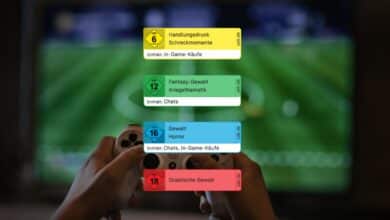
Forgetting important data at work sounds terrible, right? Does remote access sound familiar? Remote access is a technology enabling users to reach data stored in a different location (like their office PCs or Macs) but from the comfort of their home or favorite cafe.
Simply put, you can access a computer remotely using another device. Firstly, remote access demands a reliable network connection. Software for remote access is the next step – and a user must install it on both computers, their own and the one they want to access.
Distant access can be achieved through the operating system’s tools, such as Windows Remote Desktop Protocol (RDP), or via 3rd party tools like Team Viewer, LogMein, UltraVNC, and others.
The issues with remote access
Alas, convenience like this comes at a price.
Remote connections are playing fields for those internet villains, regardless of whether you use the computer for work or personal matters. For instance, fake tech support pop-ups are one of the most common ways for scammers to convince people to grant remote access. And such scams are not the only threats related to accessing devices from another location.
Remote access risks can be mitigated if we follow some advice. Some of the most common issues with remote access are as follows.
Authentication
Some people use remote access every day, unaware of the number of potential scammers who are always ready to endanger your work or privacy. Since a person must allow someone to reach their computer, part of the responsibility is on the person’s good self.
It’s vital to use two-tier authentication and restrict access only to people within your company who have the necessary credentials.
Network Access
Access to a business network can skyrocket risks. Good protection software will prevent intruders from gaining access to any computer linked to the network and sensitive data inside it.
Hence, networks should be separated into sections, like supplying a guest network to people visiting your home. It can limit the damage to a compromised network. Each network area should require network access and authentication.
Mistakes by user
Educating employees about safe habits and actions is essential. Statistics show employee mistakes are a significant risk factor in online security. Companies must train their employees on proper practices and potential security risks when using remote access.
At the same time, they should understand the security protocols of your whole organization and how to stay compliant.
Devices without check-in
Every device must have permission to access your network. If not, the chances of mistakes only rise. Letting in some device without credentials can make all efforts to secure a network futile.
With all this in mind, safety protocols are essential for remote access functionality. Test all devices before giving them remote access (MAC filtering, IP profiles, etc.).
Remote access safety solutions?
Remote access offers many benefits, but as you can see, there are several potential risks you need to address. Luckily, there are ways you can tackle these issues.
Passwords
Strong, complex passwords are the first weapon we can use. A good password should include numbers, letters, and signs. Don’t use a single password for all your accounts and computers.
Consider using a random password generator that can create your credentials for you. Don’t use birth dates, names, or meaningful words in your passwords.
Two-factor or multifactor authentication
Two-factor authentication has been a standard for many years now. The username and password are the key ingredients here, while the user or company can implement some more – a unique code, which is often sent via cell phone message.
Further security is possible through more than two steps. Biometrics authentication of fingerprint recognition is the newest and even more secure procedure.
Virtual Private Network
A VPN for PC is a tool that encrypts your connection to the internet. When you’re accessing your device remotely, you’re creating a connection between those two devices using the internet.
Hackers can intercept your connection and see the data you’re sending or receiving. When using a VPN, the encryption can hide your data from unwanted eyes.
Firewalls
Firewalls are network security systems that monitor network traffic and block data packets based on the rules you’ve set. This way, we can limit those able to access hardware or software remotely. When it comes to remote work and remote access, it’s best to go with cloud-based firewalls.
Update on time
All software and tools we use have security weaknesses that get revealed over time. Keep the software you’re using up to date. New patches and fixes contain security fixes that deal with known issues and reinforce overall protection. Furthermore, router firmware updates are also crucial, even if they are not as frequent.
Conclusion
Remote access can be beneficial for people working remotely. As always, the sweetest fruit is the hardest to pick. Take the time to set everything up and ensure there are no weak spots in your workflow.
Using the latest digital solutions should help you improve your business and not act as a liability. We hope this post helps you set up a secure remote access protocol.



